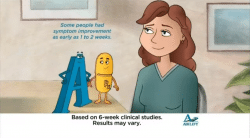
Let’s play a mind game. See if you can discern the differences between the following two scenarios:
SCENARIO ONE: It’s a cold and lonely night. You can’t remember feeling worse in your life. If you could just get something, anything, to treat your ravaging sickness and ease your enormous pain. You stumble through the alley, hoping someone out here will be able to help. There he is! He’s got what you need! How much? Twenty-five? It was twenty last time! Yeah, you got twenty-five…
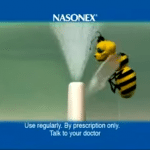
SCENARIO TWO: It’s a cold and lonely night. You can’t remember feeling worse in your life. If you could just get something, anything, to treat your ravaging sickness and ease your enormous pain. You flip through the channels, hoping some program on air will be able to help. What is that? Yes, you do feel that way! Ask your doctor? Well, maybe this one will help the other one work. You’re sure your insurance will cover it…
Stop. Go back, re-read, and examine what images you saw and feelings you felt in those paragraphs. Who are “you” as you read those? What are “you” suffering from in those? Was the “sickness” and “pain” mental or physical?

Now, ask yourself: which scenario involved a drug dealer?
Trick question. They both did.
Scenario One is the drug dealer scenario you see on NCIS CSI L&O alphabet crime drama shows that are perennial ratings hits. Scenario Two is the drug dealer scenario that pays the bills for the networks that run those shows.
It’s difficult for Americans to appreciate how strange it is that Scenario Two is allowed to flourish in our media. According to a 2009 World Health Organization report entitled “Direct-to-consumer advertising under fire”, the United States and New Zealand are the only developed nations that allow this.
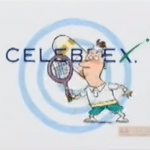
A 2011 report in the journal Pharmacy & Therapeutics asked, “Direct-to-Consumer Pharmaceutical Advertising: Therapeutic or Toxic?” It explains how the first pharmaceutical ads happened in 1981, and throughout the 1990s and 2000s, rules and regulations regarding these ads evolved. Requiring the fine print disclaimers that only allowed for print advertising came first, but that was soon relaxed for television and radio to the brief “side effects” warnings.
Stop. Go back and re-read the titles of those reports. Right there is part of why we have a blind spot to the reality of Scenario Two. “Direct-to-Consumer” evokes the framing of economics and choice in the selling of prescription medications. Call it what it is – “Direct-to-Patient” advertising – and that more properly evokes the framing of medicine and health.

It also illustrates what this advertising is really doing – allowing drug pushers to bypass doctors and talk directly to patients about their health care needs.
In 1980, there was $12 million spent on these ads. It topped $5 billion by 2006 and 2007. Since dropping to $3.5 billion in 2012, prescription drug ad spending has rebounded to $4.5 billion in 2014, according to research in the Washington Post.
What’s that ad money spent on? Of the top five most advertised drugs, two of them (Cialis and Viagra) are erectile dysfunction pills. A half-billion dollars in 2014 was spent suggesting that men “ask your doctor” if Eli Lilly’s or Pfizer’s boner pill is right for them. Boner pills that, like marijuana and painkillers, have legitimate medical uses and have significant populations of recreational users, too.
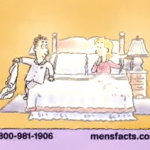
Speaking of marijuana and painkillers, another half-billion dollars in 2014 was spent on advertising for Humira, an anti-inflammatory drug, and Lyrica, a treatment for neuropathic pain. Two conditions treated exceptionally well by medical marijuana.
As you read this, you may think I’m ranting mad about Direct-to-Patient advertising. But that’s not it. I’m a die-hard free speech kind of guy. Some of the FDA data on the effect of this advertising shows positive outcomes, like doctors reporting patients who saw pharmaceutical ads “asked thoughtful questions … the ad made their patients more aware of possible treatments … [and] made their patients more involved in their health care.”
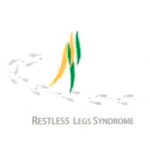
However, the same survey found that doctors “believe DTC ads confuse patients about the relative risks and benefits … [and] cause patients to think that the drug works better than it does.” Doctors also felt “pressure to prescribe something when patients mentioned DTC ads.”
The American Medical Association recently voted for a ban on such advertising. The AMA claims the direct-to-patient advertising is “driving demand for expensive treatments despite the clinical effectiveness of less costly alternatives.”
Perhaps that’s the case and perhaps I could support such a ban. So what is it? Am I “free speech” or “ad ban”?

I’m both – so long as it is applied equally to pharmaceuticals, alcohol, tobacco, marijuana, and any other legal drugs (and I’d be willing to consider processed sugar and fast food in that list).
We’ve legalized marijuana in four states, but in each we face restrictive advertising and marketing regulations. One such restriction is the ban on using cartoon characters to advertise marijuana, because doing so would be marketing it to the children.
Look through the images I’ve embedded in this post. Do any of those ads for Abilify, Celebrex, Jublia, Lamisil, Mirapex, Nasonex, or Zoloft seem to be marketing to children?

So if we’re going to have the attitude that the public health demands that there should not be direct advertising to consumers of drugs with potential detrimental side-effects, let’s do that and take the Budweiser, Viagra, and Nexium ads off the Super Bowl.
If we’re going to declare that capitalism and free speech demands that drug manufacturers shouldn’t be banned from talking to consumers about their products, let’s also allow legal marijuana producers to advertise with the same regulations. I’ll put marijuana’s side-effects up against any pharmaceutical’s side-effects any day.






